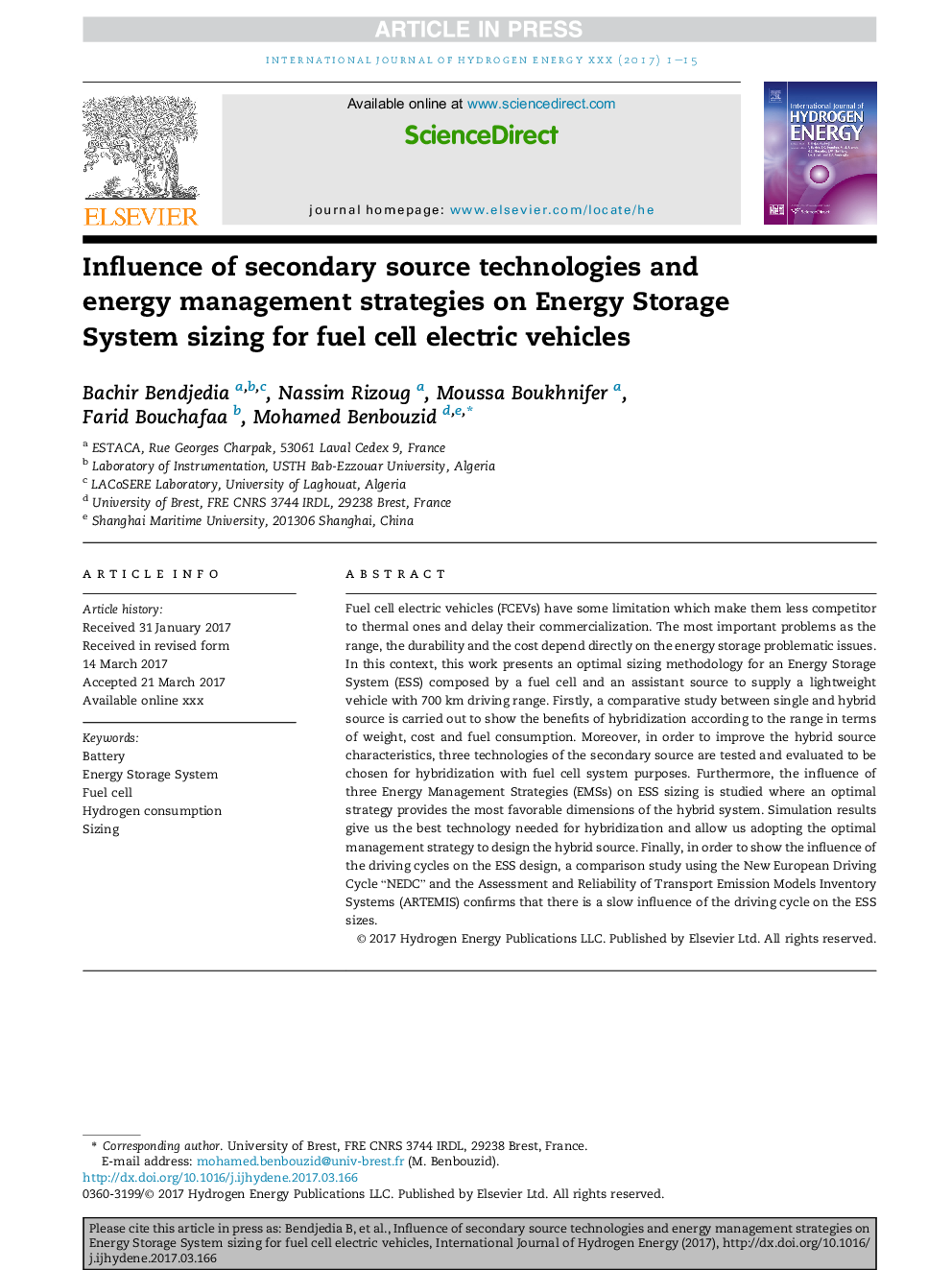ترجمه فارسی عنوان مقاله
تأثیر تکنولوژی های منبع ثانویه و استراتژی های مدیریت انرژی در اندازه گیری سیستم ذخیره انرژی برای وسایل نقلیه الکتریکی سوخت سلولی
عنوان انگلیسی
Influence of secondary source technologies and energy management strategies on Energy Storage System sizing for fuel cell electric vehicles
| کد مقاله | سال انتشار | تعداد صفحات مقاله انگلیسی |
|---|---|---|
| 100472 | 2017 | 15 صفحه PDF |
منبع

Publisher : Elsevier - Science Direct (الزویر - ساینس دایرکت)
Journal : International Journal of Hydrogen Energy, Available online 11 April 2017
ترجمه کلمات کلیدی
باتری، سیستم ذخیره انرژی، سلول سوختی، مصرف هیدروژن، اندازه
کلمات کلیدی انگلیسی
Battery; Energy Storage System; Fuel cell; Hydrogen consumption; Sizing;

